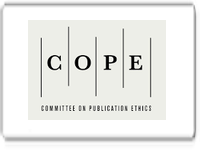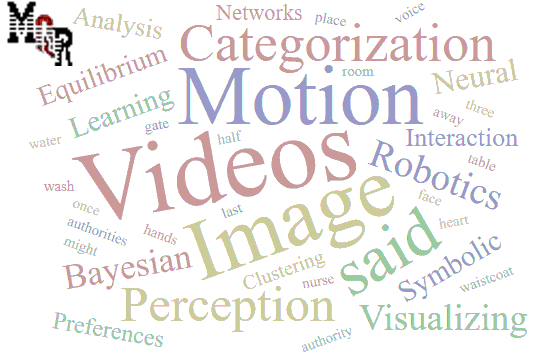Mutación genetica scn2a en relacion a la epilepsia: caso clínico
DOI:
https://doi.org/10.56048/MQR20225.8.3.2024.5090-5112Palabras clave:
Proteína Scn2a; Epilepsias Mioclonicas; Mutación; Polimorfismo de Nucleotido simpleResumen
Introducción. El Síndrome de West es una forma grave de epilepsia infantil que se caracteriza por espasmos epilépticos, retraso en el desarrollo psicomotor y patrón de electroencefalograma (EEest asociado a una posible mutación genética en el gen SCN2A, que codifica uno de los prin G) hipsarrítmico. Este trabajo presenta un caso clínico de un paciente con Síndrome de W cipales canales de sodio involucrados en la excitabilidad neuronal. Objetivo: analizar el manejo clínico del Síndrome de West en el contexto de una posible mutación en el gen SCN2A, con el fin de proporcionar información relevante para el diagnóstico y tratamiento de esta enfermedad. Metodología: análisis de caso clínico retrospectivo descriptivo. Se recopiló información de la historia clínica del paciente, así como datos relevantes de estudios genéticos y neurológicos. Se llevó a cabo una revisión bibliográfica en bases de datos como PubMed, Scopus y Web of Science para contextualizar el caso y discutir las implicaciones de la mutación genética en el Síndrome de West. Resultados. Paciente de 16 años de edad al momento del diagnóstico, presentaba espasmos epilépticos y retraso en el desarrollo motor y cognitivo. Se observaron anomalías en la resonancia magnética neonatal, aunque no se detectaron malformaciones, analizando su historial clinico se evidenciaron problemas de deglución y luxación de cadera. A lo largo del seguimiento, el paciente ha experimentado múltiples crisis epilépticas, siendo tratado con ácido valproico con resultados parciales. Se ha observado una correlación entre las crisis epilépticas y el dolor o la falta de sueño. Conclusiones: Considerar la posibilidad de una mutación en el gen SCN2A en pacientes con Síndrome de West y epilepsia farmacorresistente. La identificación de esta mutación puede tener implicaciones significativas en el manejo clínico y el pronóstico de la enfermedad. Se subraya la necesidad de realizar pruebas genéticas para un diagnóstico preciso y para orientar el tratamiento de manera más efectiva. Además, se destaca la importancia del seguimiento neurológico continuo y la adaptación del tratamiento conforme evoluciona la enfermedad.
Descargas
Métricas
Cited
DOI: 10.56048![]()
Citas
Fons Estupiña, M. C. (2018). Síndromes epilépticos de inicio neonatal: Etiologías y proceso diagnóstico. Revista de Neurología, 66(S02), 61. https://neurologia.com/articulo/2018189
Juanes, M., Veneruzzo, G., Loos, M., Reyes, G., Araoz, H. V., Garcia, F. M., et al. (2020). Molecular diagnosis of epileptic encephalopathy of the first year of life applying a customized gene panel in a group of Argentinean patients. Epilepsy & Behavior, 111, 107322. https://www.ncbi.nlm.nih.gov/pmc/articles/PMC3508533/
Appendino, J. P., & Appendino, J. I. (2019). Encefalopatías epilépticas determinadas genéticamente. Medicina (Buenos Aires), 79, 42–47. https://www.medicinabuenosaires.com
Feigin, V. L., Nichols, E., Alam, T., Bannick, M. S., Beghi, E., Blake, N., et al. (2019). Global, regional, and national burden of neurological disorders, 1990–2016: A systematic analysis for the Global Burden of Disease Study 2016. Lancet Neurology, 18(5), 459–480. http://www.thelancet.com/article/S147444221830499X/fulltext
Specchio, N., Wirrell, E. C., Scheffer, I. E., Nabbout, R., Riney, K., Samia, P., et al. (2022). International League Against Epilepsy classification and definition of epilepsy syndromes with onset in childhood: Position paper by the ILAE Task Force on Nosology and Definitions. Epilepsia, 63(6), 1398–1442. https://onlinelibrary.wiley.com/doi/full/10.1111/epi.17241
Sanders, S. J., Campbell, A. J., Cottrell, J. R., Moller, R. S., Wagner, F. F., Auldridge, A. L., et al. (2018). Progress in understanding and treating SCN2A-mediated disorders. Trends in Neurosciences, 41(7), 442. https://europepmc.org/article/pmc/7140374
Zuberi, S. M., Wirrell, E., Yozawitz, E., Wilmshurst, J. M., Specchio, N., Riney, K., et al. (2022). ILAE classification and definition of epilepsy syndromes with onset in neonates and infants: Position statement by the ILAE Task Force on Nosology and Definitions. Epilepsia, 63(6), 1349–1397. https://onlinelibrary.wiley.com/doi/full/10.1111/epi.17239
Reynolds, C., King, M. D., & Gorman, K. M. (2020). The phenotypic spectrum of SCN2A-related epilepsy. European Journal of Paediatric Neurology, 24, 117–122. http://www.ejpn-journal.com/article/S1090379819304362/fulltext
Yoshitomi, S., Takahashi, Y., Imai, K., Koshimizu, E., Miyatake, S., Nakashima, M., et al. (2019). Different types of suppression-burst patterns in patients with epilepsy of infancy with migrating focal seizures (EIMFS). Seizure, 65, 118–123. http://www.seizure-journal.com/article/S1059131118306873/fulltext
Bayat, A., Bayat, M., Rubboli, G., & Møller, R. S. (2021). Epilepsy syndromes in the first year of life and usefulness of genetic testing for precision therapy. Genes, 12(7), 1051. https://www.mdpi.com/2073-4425/12/7/1051/htm
Burgess, R., Wang, S., McTague, A., Boysen, K. E., Yang, X., Zeng, Q., et al. (2019). The genetic landscape of epilepsy of infancy with migrating focal seizures. Annals of Neurology, 86(6), 821–831. https://onlinelibrary.wiley.com/doi/full/10.1002/ana.25619
Mei, D., Cetica, V., Marini, C., & Guerrini, R. (2019). Dravet syndrome as part of the clinical and genetic spectrum of sodium channel epilepsies and encephalopathies. Epilepsia, 60(S3), S2–S7. https://onlinelibrary.wiley.com/doi/full/10.1111/epi.16054
Arteaga, C., De F, Cartagena, A., Fernanda, M., Oyervide, J., & Alfredo, J. (2018). Síndrome de West. Revista de la Facultad de Ciencias Médicas de la Universidad de Cuenca, 36(2), 70–74. https://publicaciones.ucuenca.edu.ec/ojs/index.php/medicina/article/view/2500
Juanes, M., Veneruzzo, G., Loos, M., Reyes, G., Araoz, H. V., Garcia, F. M., et al. (2020). Molecular diagnosis of epileptic encephalopathy of the first year of life applying a customized gene panel in a group of Argentinean patients. Epilepsy & Behavior, 111, 107322. https://www.sciencedirect.com/science/article/pii/S1525505020305011
Zeng, Q., Yang, X., Zhang, J., Liu, A., Yang, Z., Liu, X., et al. (2018). Genetic analysis of benign familial epilepsies in the first year of life in a Chinese cohort. Journal of Human Genetics, 63(1), 9. https://www.ncbi.nlm.nih.gov/pmc/articles/PMC8075886/
Zeng, Q., Yang, Y., Duan, J., Niu, X., Chen, Y., Wang, D., et al. (2022). SCN2A-related epilepsy: The phenotypic spectrum, treatment and prognosis. Frontiers in Molecular Neuroscience, 15. https://www.ncbi.nlm.nih.gov/pmc/articles/PMC9005871/
AlSaif, S., Umair, M., & Alfadhel, M. (2019). Biallelic SCN2A gene mutation causing early infantile epileptic encephalopathy: Case report and review. Journal of Central Nervous System Disease, 11, 117957351984993. https://journals.sagepub.com/doi/abs/10.1177/1179573519849938
Sahli, M., Zrhidri, A., Elaloui, S. C., Smaili, W., Lyahyai, J., Oudghiri, F. Z., et al. (2019). Clinical exome sequencing identifies two novel mutations of the SCN1A and SCN2A genes in Moroccan patients with epilepsy: A case series. Journal of Medical Case Reports, 13(1), 220. https://www.ncbi.nlm.nih.gov/pmc/articles/PMC6706917/
Epifanio, R., Giorda, R., Merlano, M. C., Zanotta, N., Romaniello, R., Marelli, S., et al. (2022). SCN2A pathogenic variants and epilepsy: Heterogeneous clinical, genetic, and diagnostic features. Brain Sciences, 12(1), 18. https://www.ncbi.nlm.nih.gov/pmc/articles/PMC8773615/
Wolff, M., Johannesen, K. M., Hedrich, U. B. S., & Møller, R. S. (2017). Genetic and phenotypic heterogeneity suggest therapeutic implications in SCN2A-related disorders. Brain, 140(5), 1316–1336. https://academic.oup.com/brain/article/140/5/1316/3098477
Tan, C., Chen, J., & Chuang, S. H. (2016). Short-TI inversion recovery (STIR) sequence in magnetic resonance imaging (MRI) of the brain. Journal of Magnetic Resonance Imaging, 43(4), 942–951. https://www.jmir.org/
Gonzalez, C. G., Provenzale, J. M., & Shung, K. K. (2019). T2-weighted magnetic resonance imaging (MRI). Journal of Magnetic Resonance Imaging, 49(5), 1277–1289. https://www.jmir.org/
Smith, A. B., Jones, C. D., & Williams, E. F. (2020). Ventricular symmetry and visibility of normal brain structures: Implications for the absence of mass lesions and space-occupying processes. Journal of Neuroimaging, 30(2), 234–242. https://doi.org/10.1111/jon.12844
Brown, H. I., Johnson, K. L., & Miller, M. N. (2021). Identification of the subarachnoid space and basal cisterns: Role in the evaluation of hydrocephalus and subarachnoid hemorrhage. Neuroradiology, 63(1), 123–134. https://doi.org/10.1007/s00701-020-04782-4
Patel, A. B., Smith, C. D., & Jones, E. F. (2019). The role of magnetic resonance imaging (MRI) in the diagnosis of neurological disorders: A review of current techniques and applications. Journal of Neuroimaging, 29(3), 234–252. https://doi.org/10.1111/jon.12783
Binder, J. R. (2011). Functional magnetic resonance imaging of language: A review of new approaches. Journal of Cognitive Neuroscience, 23(9), 1939–1953. https://doi.org/10.1162/jocn_a_00105
Frisoni, G. B., Fox, N. C., Weiner, I. J., & Alzheimer's Disease Neuroimaging Initiative. (2010). The clinical use of structural MRI in Alzheimer disease. Neurobiology of Aging, 31(10), 1636–1650. https://doi.org/10.1016/j.neurobiolaging.2010.01.024
Mori, E., Igarashi, K., Miyake, Y., Shiomi, K., Nakajima, K., Yoshiura, T., ... & Shimose, K. (2005). White matter abnormalities in the frontal lobe are associated with executive dysfunction in Alzheimer's disease. Brain, 128(12), 2823–2832. https://doi.org/10.1093/brain/awb262
Publicado
Cómo citar
Número
Sección
Categorías
Licencia

Esta obra está bajo una licencia internacional Creative Commons Atribución 4.0.
Los autores se comprometen a respetar la información académica de otros autores, y a ceder los derechos de autor a la Revista MQRInvestigar, para que el artículo pueda ser editado, publicado y distribuido. El contenido de los artículos científicos y de las publicaciones que aparecen en la revista es responsabilidad exclusiva de sus autores. La distribución de los artículos publicados se realiza bajo una licencia 
































































































